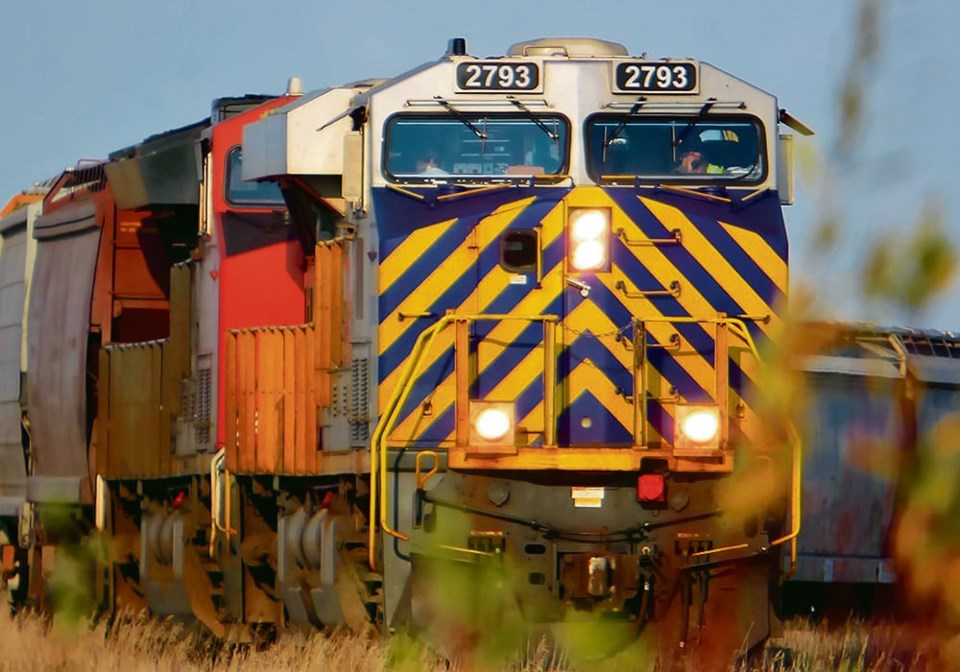WESTERN PRODUCER — The rolling cargo of the nation’s rail system and the clacking of wheels on the tracks might be music to the ears of producers this time of year as crops start their journeys to faraway lands.
But that sound should also be a warning to those active around tracks that the rail system is a dangerous place, according to the country’s rail operators.
“Real people are getting killed and injured in real events across rail networks in the Prairies,” said Canadian National Railway police inspector Brian Jones.
“It is not a hypothetical or a theoretical discussion. It happens. It happens far too often.”
The top issue for railway operators is driver adherence to crossing signals, said Jones, for both private and commercial vehicles.
He said producers need to be especially alert this time of year as the harvest is coming off and they might cross a rail line multiple times each day.
“They might cross a rail track five, six, 10 times and there is no train. They get complacent and they don’t stop at the stop sign and the 11th time there is a train there,” Jones said.
Rural, unmarked level crossings have caused deaths during otherwise good weather, when clear sightlines are present.
“It may be some impatience, people trying to beat the train. If it is at night, it could be people overdriving their headlights and misjudging train speed. Trains are always moving faster than they appear,” said Jones. “But it’s all avoidable.”
He added the theme of this year’s Rail Safety Week, which was marked earlier this month, is “stop, look, listen, live.”
Strict adherence to rail crossings at all times would have a major impact on safety, Jones said.
When it comes to pedestrians, Jones said they must understand “anytime is train time” when crossing tracks.
“My suggestion is take those earbuds out, practise being rail smart and take a look and listen for what is happening in your surroundings,” he said.
“Trains can’t stop quickly. They can’t swerve, so the onus is on those people who are lawfully using a regulated crossing. The risks just grow exponentially when you are trespassing and walking on rail property.”
Rural settings can be especially vulnerable to incidents involving trains and individuals because it may seem that traffic is infrequent.
“It’s that complacency and comfortableness with illegal activity that puts them at risk,” said Jones.
That can include operating quads, side-by-sides and snowmobiles along railway right of way, which Jones said is trespassing and dangerous.
Riders might not hear approaching trains if their hearing is impaired by a helmet or they are running a loud vehicle. When it comes to snowmobiles, there is a risk of getting clipped by a train if running the vehicle along the side of the tracks.
Quads carry their own risks.
“It becomes a problem in a hurry when you try to go across railway tracks in a quad and you get high-centred. They are heavy and the weight balance is all wrong and if you are trying to lift a quad off a railroad track when a train is coming, that is unsettling and it’s unsettling for the crew in the locomotive as well,” said Jones.
He added that pedestrians using rail bridges for shortcuts is always a risk.
“It’s dangerous and illegal. That shortcut could have lifetime implications if you are injured, if you trip and fall or if you are struck by a train on a bridge because the tolerances on either side are tight. It is just not worth the risk.”
In Canada in 2022, there were 232 incidents involving incidents on railway crossings or trespassing, causing 66 fatalities and 43 serious injuries.
SASKTODAY.ca is Saskatchewan's home page. Bookmark us at this link.




